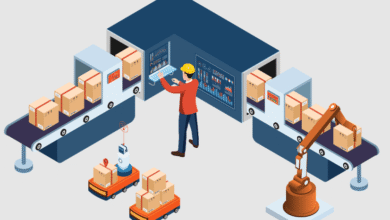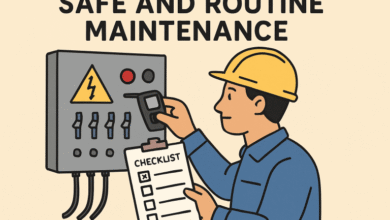Top Features Employees Look For in a Retirement Plan

Table of Contents
Overview of Employee Priorities in Retirement Plans
Retirement plans are often seen as essential benefits, particularly as people seek more control over their long-term financial security. In today’s workforce, employees look beyond basic savings—they want flexibility, tools for decision-making, and reassurance that their contributions are working for them. Choosing the right plan provider can make an immediate difference, offering features and services that align with diverse employee needs. According to the Employee Benefit Research Institute, a strategic combination of plan features is a major driver in overall employee satisfaction and participation rates.
As expectations shift and the workforce becomes more varied, companies add innovative solutions to their retirement offerings. Employees want plans that are easy to use, have reasonable fees, and, ideally, expose them to educational and investment growth opportunities. These considerations are especially important for organizations attracting and retaining top talent in competitive markets.
The Value of Employer Matching Contributions
Employer matching contributions often top the list of desired retirement plan features. Employees see it as an incentive and a reward that increases their savings without additional effort.
This match can significantly enhance retirement balances, making it one of the most powerful motivators for participation. Studies show that plans offering generous matches typically see much higher enrollment and contribution rates.
The match also demonstrates a company’s commitment to employee financial well-being—helping employees see the employer as a paycheck provider and a true partner in their future security. Employees are more likely to contribute consistently when a match is offered, boosting long-term financial confidence.
Diverse and Flexible Investment Options
Diversity in investment choices is highly prized, as employees have varying experience and risk tolerance levels. A good plan allows participants to tailor allocations to their comfort level, life stage, and future goals. This can include mutual funds, target-date funds, company stock, and other asset classes.
Flexibility is also about mobility; employees value the freedom to make changes as life circumstances evolve—such as shifting strategies closer to retirement or rebalancing after major life events.
According to Investopedia’s guide on steps to retirement, offering a broad range of diversified investments supports higher plan engagement and satisfaction. Furthermore, employees appreciate tools that explain options clearly and simulate long-term outcomes.
Transparency and Fee Structures
A retirement plan’s value is closely linked to its transparency—particularly regarding fees and administrative costs. Employees are now more informed than ever and want clarity about how their investments are managed, what fees are deducted, and the impact on their long-term returns.
Excessive or hidden fees can erode trust and potentially reduce the attractiveness of a plan, even if the investment performance is strong. Clear, honest communication and detailed statements foster a sense of security, enabling participants to focus on growth instead of worrying about where their funds go.
This transparency also makes it easier to compare plans if employees change jobs or consider rollovers, contributing to higher retention within the plan.
Accessibility and Digital Experience
With the rise of digital technology, seamless access to retirement plan accounts has never been more critical. Employees want user-friendly portals and apps that allow them to check balances, adjust contributions, and make investment choices anytime, from anywhere.
A mobile-first approach—offering alerts, calculators, retirement income projections, and real-time updates—helps users stay proactive and engaged with their savings. Accessibility isn’t just about design but also about inclusivity: platforms should be intuitive for those less familiar with financial management yet powerful enough for savvy investors.
Participation rates rise when the digital experience feels personal and empowering and employees contribute more thoughtfully to their future wellness.
Financial Education and Support
Retirement planning is complex, and employees are looking for more than account management—they want guidance and education. Top-tier retirement plans provide access to webinars, one-on-one counseling, workshops, articles, and calculators to demystify financial concepts.
Employees value answers to common questions, from the basics of compounding to the benefits of Roth vs. traditional contributions. Comprehensive educational offerings allow savers to navigate choices and setbacks better, foster resilience during market volatility, and help prevent emotional, short-sighted decisions. Ongoing support helps individuals set realistic goals, stay motivated, and make course corrections when needed.
Regulatory Updates and Adaptability
The retirement landscape constantly changes, with new laws and regulations affecting contribution limits, distribution requirements, and tax advantages. Savvy employees prefer plans and plan providers that effectively adapt to regulatory updates and clearly communicate how changes may impact participants.
For example, the Secure Act brought significant adjustments to retirement planning, including updates to required minimum distributions and new options for part-time workers to participate. Resources are invaluable for those wanting to remain informed. When communications around updates are timely and easy to understand, employees feel empowered rather than confused, solidifying trust in the plan and its administrators.
See also: The Rise of Budget-Friendly Robotic Pool Cleaners in the U.S. Market
Continuous Improvement in Plan Features
Today’s workforce expects retirement plans to evolve with technology, investment innovations, and shifting employee needs. Regular updates, such as implementing auto-escalation features, new tools for income projections, and expanded investment offerings, demonstrate a commitment to continuous improvement.
Plans that solicit participant feedback, analyze industry trends, and introduce new features position themselves as forward-thinking. This approach attracts new employees, prevents stagnation, and keeps current participants engaged. Progress-driven plans help workers feel that their providers are on the lookout for their long-term interests, ensuring sustained satisfaction and higher rates of retirement readiness.



